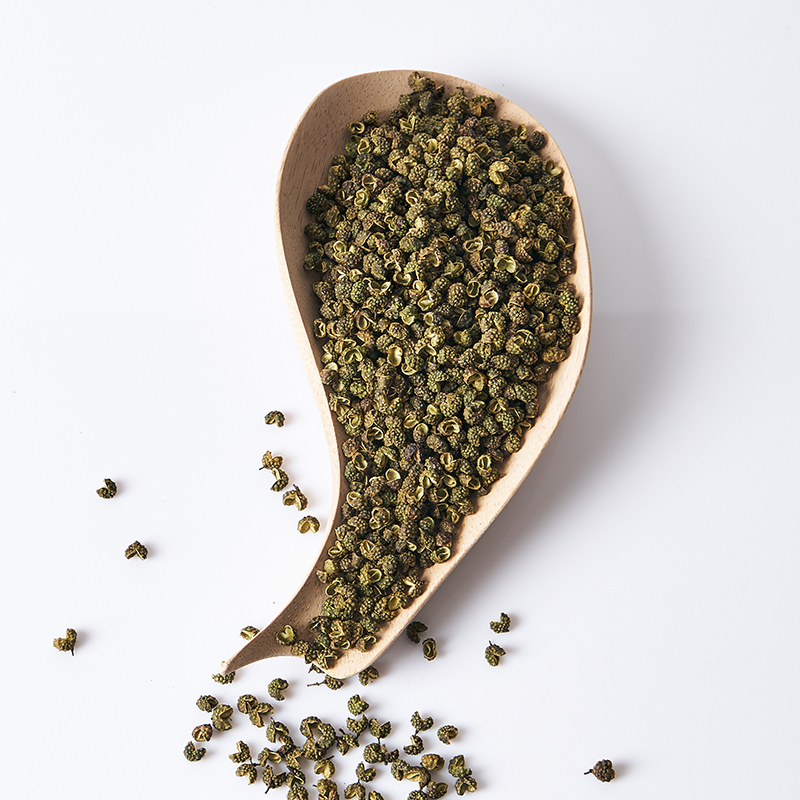Cooking is more fun with friends. Invite your friends to join Slurrp Community and share your special recipes with them
How Many Types Of Peppers Do We Need? A Look At The Different Types Of Pepper And How They’re Used In Cuisine And Cooking Dried Cassia

The last few years have seen the culinary world undergo a revolution of sorts, with several endemic spices being brought to the forefront of the gourmet food industry. This global interest in dried spices was fueled in large part by the pandemic, which forced the F&B industry to innovate in order to adapt to the scarcity of fresh produce.
Almost every cuisine in the world uses peppercorns in some way or another, be it whole black peppercorns to flavor a stock or white pepper powder in order to lend a mild spice to delicate preparations. The last few years have seen the culinary world undergo a revolution of sorts, with several endemic spices being brought to the forefront of the gourmet food industry. This global interest in dried spices was fueled in large part by the pandemic, which forced the F&B industry to innovate in order to adapt to the scarcity of fresh produce.
A large proportion of the spices that suppliers offered consisted of various types of peppercorn, sourced from remote communities all over the world. These peppers can be classified into four broad categories, with a few outliers: black, white, green, pink, Sichuan, and kampot.
Read More: 5 Health Benefits White Pepper Possesses
Smokin’ Ed Currie: The Man Behind The World’s Hottest Peppers
Pimiento, The Powerful Cherry Peppers
Long Pepper: An Ancient Spice Mistaken For Black Pepper
Timur: Uttarakhand’s ‘Szechuan Pepper’ Is A Himalayan Gem
How To Use Black Pepper For Cough And Cold
Black pepper is the most popular class of the spice, used all over the world for both culinary and medicinal purposes since time immemorial. Most phenotypic variations of black pepper can be traced back to India, where the spice is an indispensable part of the country’s cuisine. India is also the world's largest exporter of spices, where it is intercropped with cash crops such as coffee and fruit trees, primarily in southern states. The way pepper is processed in the country is unique in that there is minimal processing—producers dry the unripe green drupes without the use of chemicals or blanching. From a culinary standpoint, the spice has a wide range of applications, including adding and layering spice and flavor with other additives that achieve the same effect, such as chilies and bell peppers. The phytochemical that is responsible for the drupe’s spiciness, piperine, is a completely different substance from the capsaicin found in chili peppers, making for a different sensory experience, especially when used in conjunction with the same. Piperine is also extracted from black peppers to make a concentrate, which is used as an ingredient in supplements and cosmetics as a means to increase the bioavailability of other ingredients.
Green peppercorns are processed in a manner similar to black peppercorns, albeit with an additional step that may involve treatments that involve the use of chemicals such as sulfates or purely mechanical processes such as freeze drying. This is done to preserve the drupe's green color and flavones, which make this variety of pepper much more fragrant than black or white peppercorns made from the same cultivar. Alternatively, the peppers may be pickled in brine, which makes for a crunchy addition to salads and spreads. Green peppercorns pickled in distilled white vinegar are considered a staple in pepper-growing regions in Tamil Nadu.
The difference between white and black peppercorns lies in postharvest processing. White peppercorns are produced by letting the drupes fully ripen, after which they are subject to retting (treatment with water inoculated with microbial cultures) in order to dissolve the pulp of the drupe and expose the pale seed that lies underneath. The seeds are then dried and sold whole or powdered. Most white peppers taste the same, owing to the lower flavonoid content as a result of retting. The piperine content of the dried berries is significantly lower than that of black pepper, making it an ideal addition to dishes like white fish and soups that would be easily overpowered by its more ubiquitous counterpart.
Pink peppercorns are the drupes of trees that are part of the cashew family and are endemic to Brazil and Peru. The spice has a sweet, berry-like flavor and a heat that is more reminiscent of that of chili peppers than regular peppercorns. The spice is used across South American and Creole cuisines. Several chefs have capitalized on the drupe's unique flavor, using it as an inclusion in a range of preparations, from cakes to vinaigrettes.
Sichuan peppers, too, are far removed from the ubiquitous black drupes. The spice has various colors, from a deep pink to a jet black, and is delicate yet crunchy to the taste. These drupes have a unique mouthfeel and a delicate, almost floral taste that is followed by a numbing effect. The numbness is caused by a chemical called hydroxy-alpha sanshool, which is a potent flavor enhancer. These peppercorns add a distinct flavor to dishes with a lot of other spices, like chili crisp or five-spice powder. Most cuisines will only use the outer husk of the plant, discarding the black seeds inside. There are two species of the plant that are native to north-east India and range from green to black in color. These drupes are used across the Indian subcontinent, featuring in North Eastern, Bengali, and Konkani cuisine.
The Kampot peppercorn is a cultivar of black pepper that is native to Cambodia. The drupes are known to be intensely spicy, with hints of floral and citrus flavors. The plant is protected by a GI tag in Cambodia, where it is used to flavor most food preparations.

Dried Red Sichuan Peppercorns ©2022 Slurrp, HT Media Labs. All rights reserved.